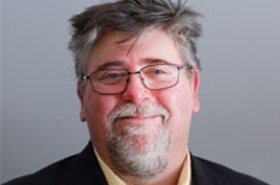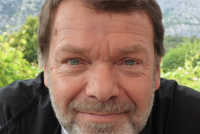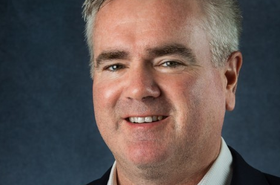The growth in data demand and our reliance on digital services can be seen everywhere, including how we shop, work, and even relax at home streaming our favorite shows and movies. At the center of this shifting paradigm is the data center.
While data centers have become a cornerstone in our society, whether by supporting our global economy or automating supply chains we rely on every day, their operations have raised significant concerns regarding efficiency and energy usage.
Over the past three years, we’ve seen many of these new digital behaviors evolve from short-term trends to daily norms.
For instance, according to a recent McKinsey survey, 58 percent of job holders in the United States (roughly 92 million people), work remotely at least part of the time. This is a staggering leap considering that in 2019, about three-quarters of workers had never worked from home, according to an American Community Survey.
As demand for digital growth increases, so will the demand for more data center construction. To date, there’s already 4.1 gigawatts of new data center capacity currently under construction.
To help slow down the environmental impacts during a time of unprecedented data center growth, we’re seeing a shift in what critical infrastructure customers are demand to support their aggressive efficiency and sustainability goals.
The most famous examples of these initiatives include Google announcing its goal of employing only carbon-free energy sources by 2030 and Microsoft setting goals to be carbon-negative and water-positive by that same year.
Critical infrastructure providers have risen to the challenge and are working diligently to develop high-performing products and solutions that use less water and more renewable energy.
Acknowledging that the work is far from over, here is an outline for how critical infrastructure providers can embrace a future-focused mindset to meet these dynamic customer needs.
A roadmap for more purpose-driven product design
Vertiv has worked hard to improve its internal operations and to deliver solutions that help contribute to customer efficiency and energy reduction goals. Our work is rooted in five key principles, outlined in our recently released ESG report:
- High efficiency: Design energy- and water-efficient solutions for the market.
- High reliability: Build resilient and highly serviceable equipment that’s durable and long-lasting.
- Low impact: Strive to understand and limit manufacturing processes that may have adverse environmental impacts, and measure and increase our use of recycled materials in our products and product packaging.
- Low touch: Enable remote troubleshooting, optimization services, and more connected systems to improve and reduce environmental impact of maintenance practices.
- Circular economy: Reuse, refurbish, or recycle end-of-life equipment and materials.
Making inroads for more efficient solutions means introducing new and upgraded products with high energy- and water-efficiency attributes that can replace less-efficient legacy models.
For example, the Vertiv Liebert® EXL S1 with Dynamic Online Mode can increase energy efficiency by up to five percent and reduce energy losses by up to 75 percent when compared to a legacy model.
Several of Vertiv’s uninterruptible power supply (UPS) units are ENERGY STAR® qualified, and we are an industry leader in designing data center UPS systems with long-lasting, lithium-ion batteries that require less maintenance and change-outs than traditional battery technologies.
Additionally, our water-free cooling systems have saved billions of gallons of water a year worldwide since we introduced them in 2013. Our Liebert® DSE Free-Cooling Economization System, for example, saves up to 4 million gallons of water per year, per unit, compared to previous models.
In the future, we can expect to see greater adoption of energy solutions using fuel cells, renewable energy assets, and long-duration energy storage systems, including battery energy storage systems (BESS) and lithium-ion batteries which recharge and recover quickly.
For telecom cell sites, Vertiv and other companies offer solutions that enable solar energy to be used as the primary power source for remote facilities that are off the power grid and as supplemental energy sources for those that are connected to the grid.
High-efficiency rectifiers help telecom carriers save energy and mitigate emissions associated with their energy production.
Working with industry leaders to build future-focused data centers everywhere
These industry challenges cannot be solved by one organization, and it’s important for industry leaders to come together to find solutions that can lead to a more efficient data center — and a better future for our planet.
At Vertiv, we work to do so by getting involved with organizations addressing data center efficiency and emissions, such as the RISE Partnership Program and EcoEdge PrimePower Project, the Sustainable Digital Infrastructure Alliance, the European Data Centre Association, and the newly announced iMason’s Climate Accord.
To work towards meaningful change, industry leaders should also partner with local municipalities and have conversations about making the data center as high a priority as their other utilities. Action items from these conversations can include leveraging on-site renewables and energy storage for the data center to support and stabilize the grid.
The current interactions between manufacturers and customers to design and implement efficient solutions is a promising start on the path toward a more responsible data center.
However, for more meaningful change to occur, a concerted effort from data center operators, infrastructure partners, industry organizations, and other key stakeholders must be made so data centers can continue to support our increasingly digital society while minimizing their environmental impact.
For more information, visit Vertiv.com.
More from Vertiv
-

Sponsored Applying telecoms energy management strategies to the ITEdge
Surprisingly, perhaps, the telecoms industry could teach data center operators a thing or two about energy efficiency, says Vertiv's David Wilson
-

Sponsored The retail Edge computing evolution
Demanding consumers are stretching retailers to breaking point, forcing them to rely on Edge computing to keep up, says Vertiv's Henk Ijspeerd
-

Sponsored Retailers get help to navigate uncertain future through intelligent digital infrastructure upgrades
Shifting from bricks and mortar sales to ecommerce demands a complete backend overhaul for most retailers, warns Vertiv's John Dynan. Here's how to do it.

